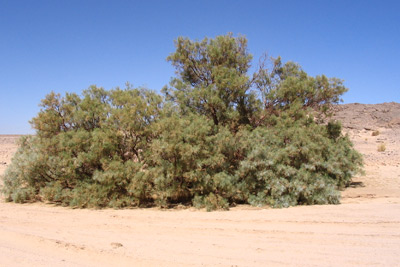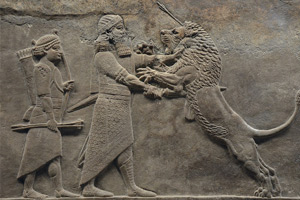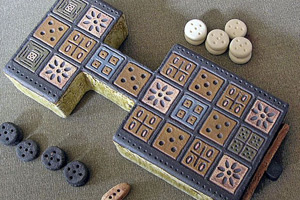In the legend of Enki and Ninhursag, Ninhursag is the consort of Enki. Numerous Sumerian deities descend from their couplings.
According to some, Ninhursag might be seen as the same goddess as Hathor in Egypt, and they are both depicted with a symbol ressembling the greek letter Omega Ω (possibly a womb symbol).

Adab
Adab (𒌓𒉣𒆠 Adab ki) was occupied from at least 3000 BCE. It was initially probably a city or city state, partly under the city of Ur. During the kingship of Lugal-Anne-Mundu, around 2350 BCE, Adab seems to have conquered all of Mesopotamia and he was "King of the four quarters of the world". Soon after, Adab was reduced back to a city in larger empires (first Mari, then the Akkadian Empire, and later the Babylonian Empire) .
.
See a complete list of kings of Adab.
Lugal-Anne-Mundu is mentioned in the Sumerian King List:
"In Ur, Nanni was king, n years he ruled; Mes-kiag-Nanna, son of Nanni, n years he ruled; (...) Ur with weapons was struck down; the kingship to Adab was carried off. In Adab Lugal-ane-mundu was king, n years he ruled; one king, the years: 90 he ruled; Adab with weapons was stuck down; the kingship to Mari was carried off."
According to an inscription attributed to him, Lugal-Anne-Mundu subjugated the "Four Quarters of the world" — (i.e. the full Fertile Crescent region, from the Mediterranean to the Zagros Mountains):
"For Nintu, the mother of the nation, queen for the temple, great spouse of Enlil, his beloved lady— I, Lugalanamundu, the strong man, who provides for Nippur, king of Adab and king of the four world quarters (...) secured tribute upon the people of all the lands, made the people of all the lands lie (contentedly) in riverine meadows (...) exercised kingship over the whole earth (...) The Cedar Mountain, Elam, Marḫaši, Gutium, ... Subartu, Amurru, Sutium, and the Mountain(?) of Eanna in their ... they sat on golden thrones. Golden ... I placed in their hands, and golden ... I placed in their laps. Their ... in Adab into my ... I having made come, and ... I having made come before me..."
The first explorations around Bismayah started in 1885. The main excavations of Bismāyah were done in 1903-04 by the American archeologist Edgar James Banks.
Interesting articles
You may also be interested in these articles

Trees in Sumeria
It is easy to think of Sumeria as a barren land, only kept alive by irrigation canals. In addition to irrigated trees such as date palms, we also find interesting flora such as the tamarisk, juniper and cedar.

The Lion Hunt
If you have visited the Sumerian section of the British Museum, chances are you have seen the Lion Hunt of Ashurbanipal. It is a series of very impressive wall coverings illustrating the King Ashurbanipal's prowess.

The game of Ur
Possibly the oldest board game in existence, and surely the oldest we have rules for, the Game of Ur is a fascinating predecessor to Backgammon. Watch a video on how to play it, and see the original at British Museum.

